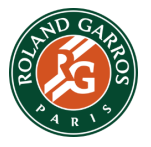Fitness & Wellness




The growing health awareness, along with the increasing popularity of fitness apps and influencers, is boosting the sports and fitness market in China. According to Ibis World market research, the fitness industry has experienced a 4.4% growth in the last five years and it is estimated to be worth 7.1 billion US dollars annually. Most of Chinese sport lovers live in Tier-1 cities, such as Beijing and Shanghai, but the mushrooming of fitness apps is contributing to spread the hype about physical exercise throughout the whole country. In 2019, almost 400 million people in China practiced sport habitually and slightly over 68 million of them went to the gym regularly, showing a huge market potential for both foreign and local fitness brands.
Renowned retailers and fitness clubs relied on our deep expertise in China’s sports and fitness industry in order to expand in the Chinese market and enhance customer experience. Surveys, focus groups, store-checks, in-depth interviews and feasibility studies are just some of the tools made available by Daxue Consulting’s team.

By sharing their personal stories, fitness influencers have sparked a greater interest in sports and physical exercise. Moreover, they have become key supporters of body positivity and healthy lifestyles. Sammi G and Su Yulie are some of the most popular fitness influencers on Weibo: they both decided to leave behind their frenetic and stressful white collar life and embraced a more balanced and healthy routine, marked by regular workouts as well as a greater attention to mental and body care.
The sports industry in China is booming and it is expected to be worth up to 470 billion US dollars by 2025. Football is gaining more and more popularity in China and the establishment of football academies by famous clubs, such as Ajax and Bayern football school, marked a new era for this sport in the Chinese market. Currently, roughly 50 million Chinese people play football, among which 30 million are students, but they are expected to increase in the future.
Even though football is spreading among Chinese young people, the NBA remains around six times more popular than European football leagues. Indeed, basketball courts are ubiquitous in China since about 18% of Chinese sport lovers enjoy playing basketball regularly.
The turnover of China’s sports and fitness market has grown very rapidly in recent years. Chinese consumers like engaging in a wide range of fitness activities and yoga is one of most popular choices. Beyond granting cardiovascular health, inner peace as well as a more toned and flexible body, yoga attracts Chinese Millennials because it creates a strong sense of community among people involved.
CrossFit is getting more and more widespread among Chinese gym-goers as well. What they like about CrossFit is its diverse and creative set of exercises, which allows building a strong, agile, and athletic body.
Martial arts, such as Taiqi, Wushu and Kung fu, are deeply rooted in Chinese culture. Nevertheless, foreign self-defense techniques are gaining ground, and boxing is maybe the most successful one. Women are a growing target consumer base for boxing in China, since several female celebrities contributed to make it popular on Chinese social media platforms as an effective way to keep fit. Although it remains a niche sport, China’s boxing market is expected to hit 856 billion RMB in 2022.
Nowadays, Chinese consumers are quite familiar with the concept of meal replacement and Euromonitor International forecasts that their market size may reach 120 billion RMB in 2022, surfing the growing health awareness in China. However, there is still a widespread lack of confidence in this new health product in China. If they really want to increase sales, meal replacement producers need to focus more efforts on convincing Chinese consumers about their products’ health benefits and their capability of replacing a solid meal without compromising nutrition intakes.
Even though practicality remains a key factor when it comes to purchase sportswear, nowadays, Chinese consumers pay more and more attention to brand values and symbols. China’s sportswear market reached 316.6 billion RMB in 2019, recording a growth rate of 17%, and it is expected to further increase in the following years, hitting 542.5 billion by 2024. Altogether, Nike and Adidas control about 40% of the entire market, but domestic brands, such as Anta and Li-Ning are gradually gaining ground, especially through surfing the current Guochao wave.
Technology is transforming a wide range of industries and the fitness sector did remain unscathed. Indeed, cutting-edge gyms, such as LeFit and SUPERMONKEY, are much more digital and flexible than conventional ones, as they allow consumers to book courses through an easy-to-use app and attend classes without buying any annual membership plan. Thereby, while traditional gyms sail in troubled waters, the franchising business model of leading-edge fitness clubs, along with their digitalized services, is fuelling their growth and expansion across China.
Covid-19 paved the way for in-home workout and increased the sales of fitness equipment. Currently, such fever for indoor physical exercise is pushing Chinese consumers to purchase around 5 and 6 millions of home fitness equipment every year, and industry insiders predict that this trend is bound to further grow in the next two or three years. Training apps got very popular as well. With over 40 million monthly active users in 2019, Keep is the most renowned fitness app in China: it provides consumers with exercise monitoring and guidance, nutritional diet advising and online sporting goods retailing.




